Heading out the door? Read this article on the new Outside+ app available now on iOS devices for members! Download the app.
Doing a ton of what you love (climb, train, climb, climb, train, repeat) naturally makes muscles tight, sore, and knotted—especially those forearms! Without effective recovery, you can experience a drop in performance, an increase in pain, or even worse, injury. The key to quick recovery is flushing out lactic acid and metabolic waste, so you can come back the next day feeling fresh and ready to crush. These simple self-massage procedures will help you do just that.
The Problem
Repetitive strain injuries (RSI) such as tendonitis don’t just appear one day out of nowhere, hence the name “repetitive.” When specific muscles are used intensely, they have a tendency to become shorter, dense, and sore. Muscle cells no longer easily slide or glide over each other to create movement. When muscles are chronically short, it creates a pull (or strain) on the spot where the muscles meet tendons and attach to bones, both at the elbow and through the wrist into the hand. This constant pulling can eventually blossom from latent, under-the-radar tension into chronic pain at the elbow or wrist. Plus, muscle tension limits comfortable range of motion (ROM), which reduces performance. Climbers and athletes of all types should strive for full range of motion, meaning the muscles move without pain or restriction within the complete range. Maintaining full ROM means enjoying your natural levels of strength and endurance with faster recovery times and fewer injuries.
The Solution
Learning and using sports massage therapy techniques on yourself will release tight muscles and help you regain full, pain-free ROM. You’ve probably tried to do what people have done for the last few thousand years: rubbing the sore spot with your free hand. You’re on the right track, but that method will be tough to pull off, especially when both arms are cranked. The following steps will give you the correct techniques to be truly effective and make a difference in your recovery time. Step one is to do broad, general massaging in order to increase blood flow, flush lactic acid, and identify trigger points. Step two involves targeted pressure that will release these trigger points and restore your muscles’ full ROM.
The Guidelines
Use pain as your guide when applying pressure. Find and maintain the delicious “ooooh, yes, hurts so good” kind of pressure—the feeling that something good is happening to your muscles when you press with the right movement. The too-much-pressure “ouch” kind of pain will bruise and damage your muscles, and there’s nothing good about that.
Massage slowly to discover your own patterns of muscle use and trigger points. You will tend to have sore spots in the same places, specific to how you engage certain muscles. Do it as often as you brush your teeth: Start with two to three minutes, two to three times a day. Go for longer later when your muscles get used to it.
You can do this at any time: before, during, or after climbing. Before and during will keep you loose for that particular day of climbing, while after will help your body recover.
Adjust your recovery expectations. It took weeks or months to create your problem, so allow your muscles to slowly (over the course of days or weeks) regain their full, pain-free ROM.
Drink more water than you normally would. Add two to three eight-ounce glasses to your usual water routine. This will hydrate muscles, help flush out the lactic acid, and be an integral part of your whole body’s recovery.
The Tool
Find the tool that works best for you. Use your imagination. It’s all in how you use it. Technique trumps all, no matter the size or shape of your tool. Snickers aside, that’s the truth. It should:
>>Amplify your massaging force with a concentrated mass, meaning it has a weight of one to three pounds (or more).
>>Have both a smooth surface and an edge, but not so sharp that it could cut you when pressing down.
>>Be low-cost or free and found anywhere.
Examples:
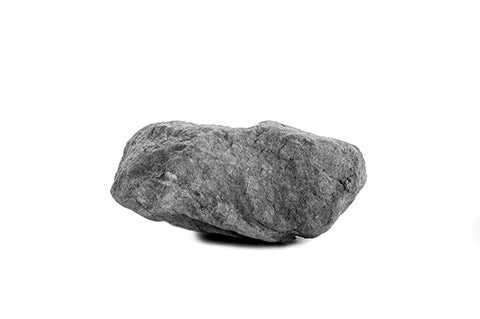
A smooth, hefty stone that you can hold with one hand, found on-site.

A brick.
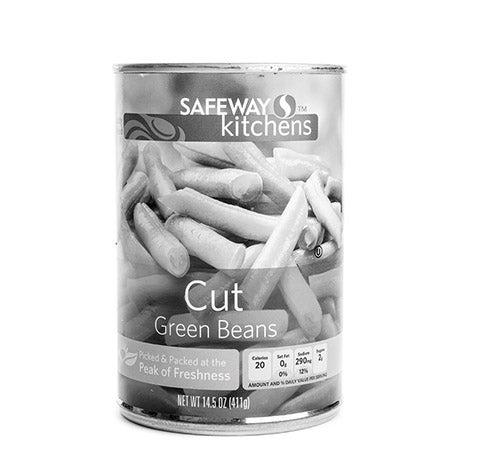
A large beer or food can. Decide whether you’re hungry or thirsty.
Upper Arms
You can use these methods for your biceps and triceps, too, which can harbor even more trigger points. Follow the listed steps, but while you hold the edge of your tool on an upper-arm spot, flex your forearm up (about 20 percent) then extend all the way down at the elbow. Seek out and work on new spots in the upper arms to recover tight muscles and regain full range of motion in that area.
Technique #1
Circulatory Massage
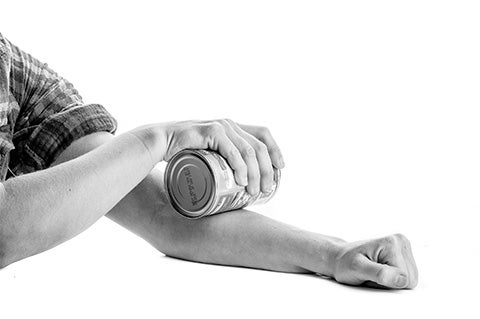
Nearly everyone who is über-active with their arms and hands has small, painful bundles of tight muscle tissue, called trigger points, in the forearm, bicep, and tricep muscles. These trigger points limit ROM and can only be discovered by accurate touch, meaning you poke and probe until you find the sensitive spots of tight tissue.
Motion: Rest the offending arm on your thigh or on a table. Probe with the flat part or the edge of your chosen tool in a broad, circular motion with mild, general pressure. Move a couple of inches at a time, slowly and thoughtfully feeling for soreness.
Effect 1: This stimulates general cellular exchange of nutrients and oxygen, and it brings blood to stagnant areas in order to help gently flush the cells of metabolic waste products.
Effect 2: It specifically locates sore trigger points so you can apply the next killer technique that will help you regain your ROM.
Technique #2
Active Release/Trigger Point Therapy
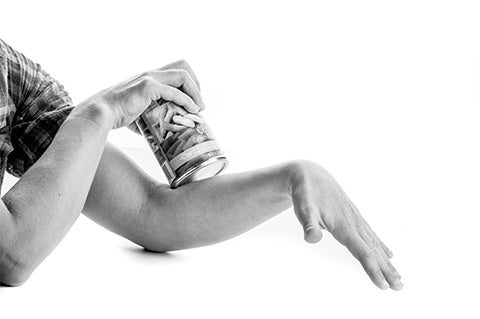
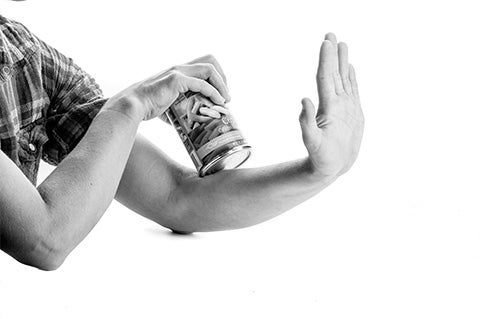
In my few decades of experience, this is the most effective therapy technique for regaining ROM. Some might find it painful at first, but it’s the most direct way to unstick tight muscles so they move properly and smoothly.
Motion: Probe for sensitive trigger points a few inches below the elbow on the outside of the forearm. The main bulky muscle there is the extensor digitorum; this very long muscle runs from the elbow into the hand and controls extension of the fingers, wrist, and elbow. Needless to say, it’s quite important for climbers. Find the specific sore spot, hold pressure on that spot with the tool edge, and then move the hand at the wrist to stretch the forearm muscle. You will feel it move under your tool edge. Change the angle to approach the spot from all sides, and slightly alter movement of the tool to find what hurts the most. The pain will move and shift. Seek that good pain.
Effect 1: Regains ROM like no other technique. The pressure unsticks those tightly bundled muscle cells from each other, so they lengthen and release the tension, preventing the pull on their tendon attachments.
Effect 2: Gives you the awareness and confidence to maintain your arms and prevent injury.
Terry Cross is a sports massage therapist who lives in Maine and guides clients in the art of self-care for arm and hand tendonitis. He also invented the Armaid, a self-massage device (armaid.com).